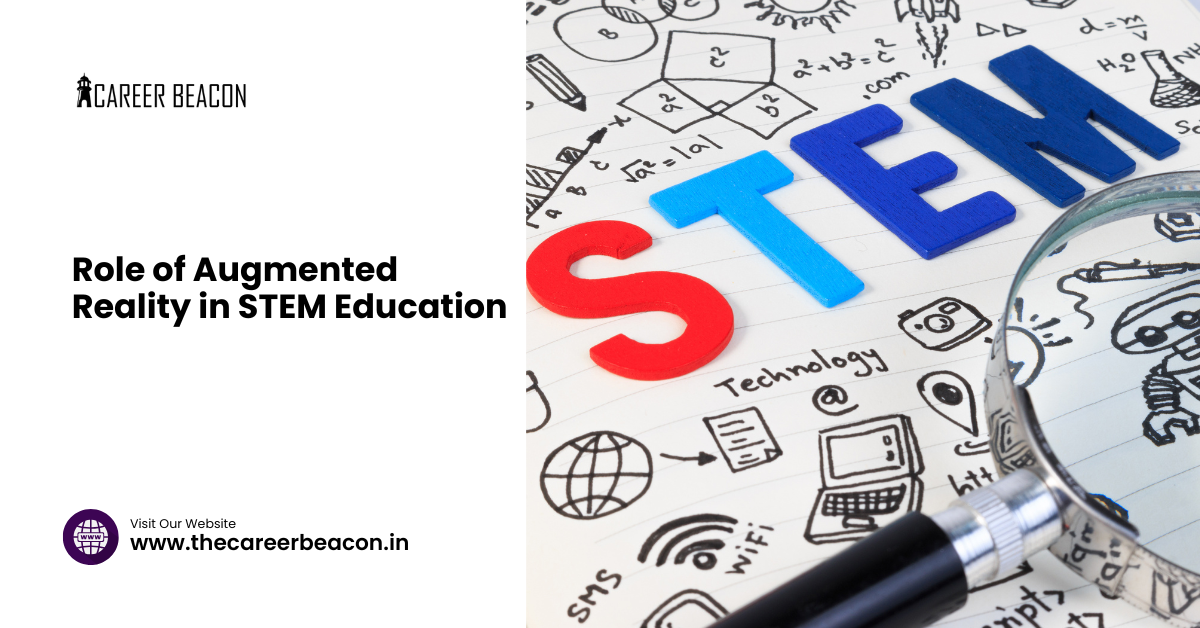
Role of Augmented Reality in STEM Education
In recent years, Augmented Reality (AR) has emerged as a transformative technology with the potential to revolutionize various fields, including education. AR enhances how we interact with the world by overlaying digital information onto our physical environment. This technology offers a new dimension to learning by merging the digital and real worlds, making education more immersive and interactive. In the context of STEM (Science, Technology, Engineering, and Mathematics) education, AR provides students with unique tools to visualize, interact with, and better understand complex concepts.
STEM education often involves abstract ideas and intricate processes that can be challenging for students to grasp through traditional methods alone. AR addresses these challenges by offering dynamic, hands-on learning experiences that can bring theoretical concepts to life. By integrating AR into STEM classrooms, educators can enhance engagement, provide deeper understanding, and prepare students for future careers in these critical fields.
Understanding Complex Concepts
- 3D Visualisation: AR allows students to view complex scientific and mathematical concepts in three dimensions. For example, in a chemistry class, students can visualize molecular structures and chemical reactions in 3D, making it easier to understand how different elements interact.
- Interactive Models: Instead of static images in textbooks, AR provides interactive 3D models. In biology, students can explore detailed models of the human anatomy, rotate and zoom in on organs, and see how they function together in real time.
- Real-World Context: AR helps students see the real-world applications of abstract concepts. For instance, in physics, students can observe how forces like gravity and friction affect objects in a simulated environment, helping them connect theoretical knowledge with practical scenarios.
Interactive Learning
- Hands-On Experiments: AR enables virtual experiments that might be too dangerous or costly to perform in a traditional lab setting. Students can conduct virtual experiments in a safe environment, allowing them to test hypotheses and observe outcomes.
- Simulations: Interactive simulations in AR let students manipulate variables and see immediate effects. For example, in an engineering class, students can build and test virtual structures to understand engineering principles and their applications.
- Gamified Learning: AR often incorporates game elements that make learning more engaging. Educational games and challenges can motivate students to explore STEM subjects and apply their knowledge in interactive and enjoyable ways.
Enhancing Problem-Solving Skills
- Real-Time Feedback: AR simulations provide instant feedback on problem-solving attempts, allowing students to quickly see the results of their decisions and learn from their mistakes.
- Scenario-Based Learning: AR creates scenarios that require students to apply their knowledge to solve problems. In engineering, for example, students might work on a virtual construction project, solving issues related to design, materials, and stability.
- Critical Thinking: By engaging with interactive AR scenarios, students develop critical thinking and analytical skills. They learn to approach problems from different angles and develop solutions based on their observations and experiments.
Encouraging Collaboration
- Shared Experiences: AR applications often support multi-user interactions, enabling students to work together in a shared virtual space. This collaboration fosters teamwork and communication skills as students tackle challenges together.
- Group Projects: AR can facilitate group projects where students collaborate on designing and testing virtual models. This collaborative approach enhances learning and helps students develop social and cooperative skills.
- Peer Learning: With AR, students can share their virtual creations and findings with peers. This peer-to-peer interaction encourages knowledge-sharing and collective problem-solving.
Making Learning Fun
- Engaging Content: AR transforms traditional lessons into interactive experiences. Educational content becomes more exciting when students can interact with 3D models, virtual simulations, and immersive environments.
- Increased Motivation: AR’s fun and interactive nature helps maintain students’ interest and motivation. Engaged students are more likely to participate actively and retain information.
- Creative Exploration: AR allows students to explore subjects creatively. For example, in a design class, students can use AR to visualize and modify their designs in real-time, making the learning process more dynamic and enjoyable.
Practical Applications
- Field Simulations: AR can simulate fieldwork scenarios that are difficult to replicate in a classroom. For instance, in environmental science, students can use AR to explore virtual ecosystems and study their components.
- Real-World Problem Solving: AR applications can mimic real-world engineering challenges, allowing students to practice and refine their skills. For example, virtual engineering labs can provide a realistic environment for testing and improving designs.
- Hands-On Experience: By offering practical, hands-on experiences, AR helps bridge the gap between theoretical learning and real-world applications. Students gain practical skills that are valuable in their future careers.
Overcoming Limitations
- Visualisation of Abstract Concepts: AR provides visual representations of abstract concepts that are difficult to understand through text or images alone. This helps students grasp complex ideas more effectively.
- Enhanced Engagement: AR addresses the limitations of traditional teaching methods by making learning more engaging and interactive. This can lead to improved student outcomes and greater interest in STEM subjects.
- Overcoming Practical Constraints: AR can simulate experiments and scenarios that may be impractical or impossible to conduct in a physical classroom. This expands the range of learning opportunities available to students.
Improving Accessibility
- Alternative Learning Methods: AR offers alternative ways of presenting information, which can benefit students with different learning styles and needs. Visual and interactive content can support diverse learners.
- Inclusive Education: AR can be customised to meet the needs of students with disabilities. For example, AR applications can include features like text-to-speech and adjustable visual elements to support students with various needs.
- Enhanced Engagement for All: By providing engaging and interactive content, AR ensures that all students, regardless of their learning preferences, have access to high-quality educational experiences.
Future of AR in STEM Education
- Technological Advancements: As AR technology continues to evolve, it will offer even more advanced and immersive experiences. Future developments will provide more detailed simulations and interactive tools for STEM education.
- Integration with Other Technologies: AR will increasingly integrate with other technologies, such as Virtual Reality (VR) and Artificial Intelligence (AI), to create even more dynamic and effective learning environments.
- Widespread Adoption: As AR becomes more affordable and accessible, its adoption in STEM education is expected to grow. This will enhance the education quality and prepare students for future careers in these fields.
Challenges and Considerations
- Cost of Technology: Implementing AR in schools can be expensive, requiring investment in devices and software. Schools would need to consider their budgets and seek funding or partnerships to support AR integration.
- Teacher Training: Effective use of AR requires training for educators. Teachers will be familiar with AR technology and its applications to integrate it successfully into their teaching practices.
- Technological Reliability: Ensuring that AR applications are reliable and function as intended is crucial. Technical issues can disrupt learning and affect the overall effectiveness of AR in education.
In conclusion, augmented Reality is revolutionizing STEM education by making complex concepts more accessible, interactive, and engaging. It provides students with practical, hands-on experiences that enhance their understanding and problem-solving skills. While there are challenges to overcome, the benefits of AR in education are substantial. As technology advances, AR will continue playing a significant role in shaping the future of STEM education, making learning more effective and enjoyable for students.


